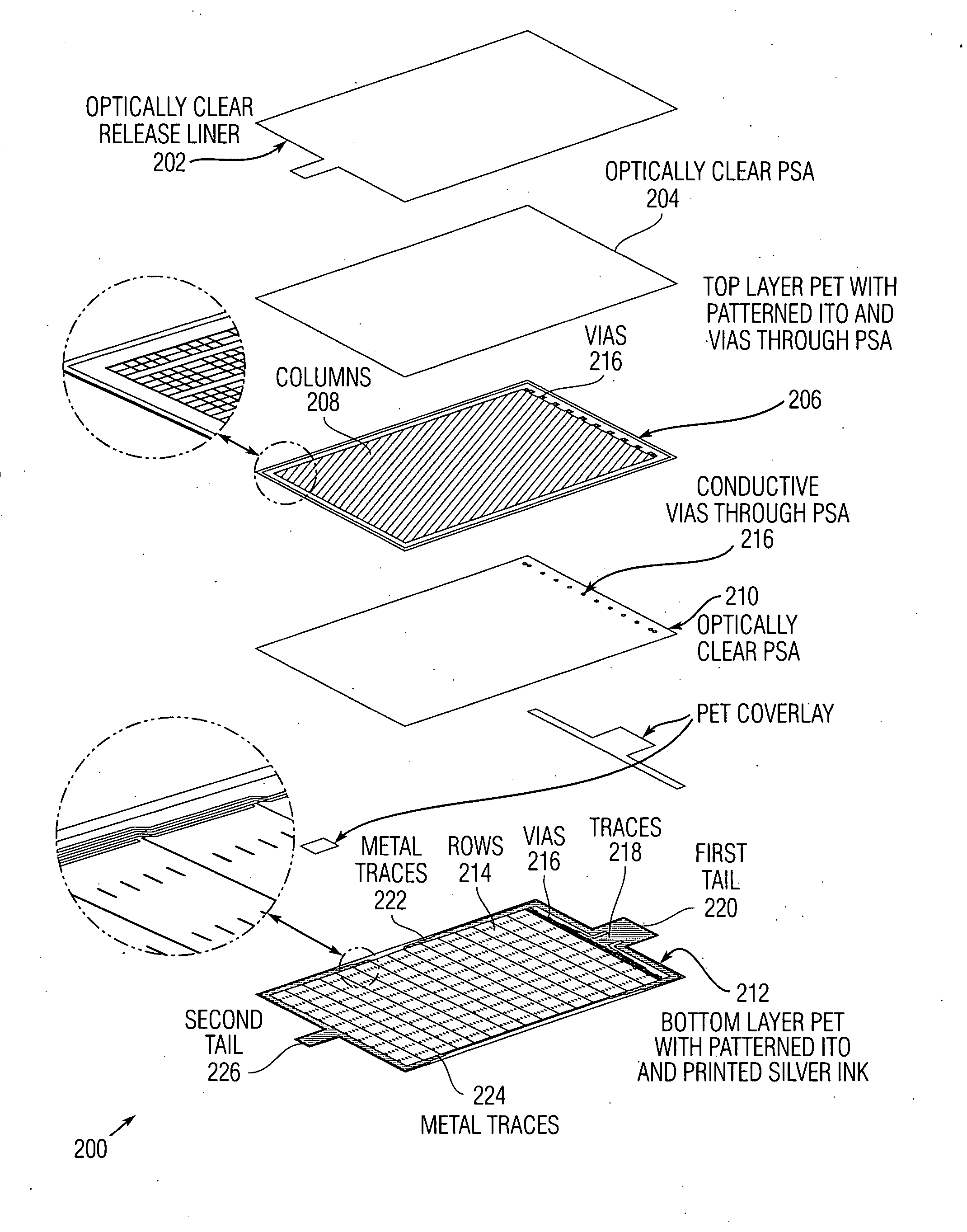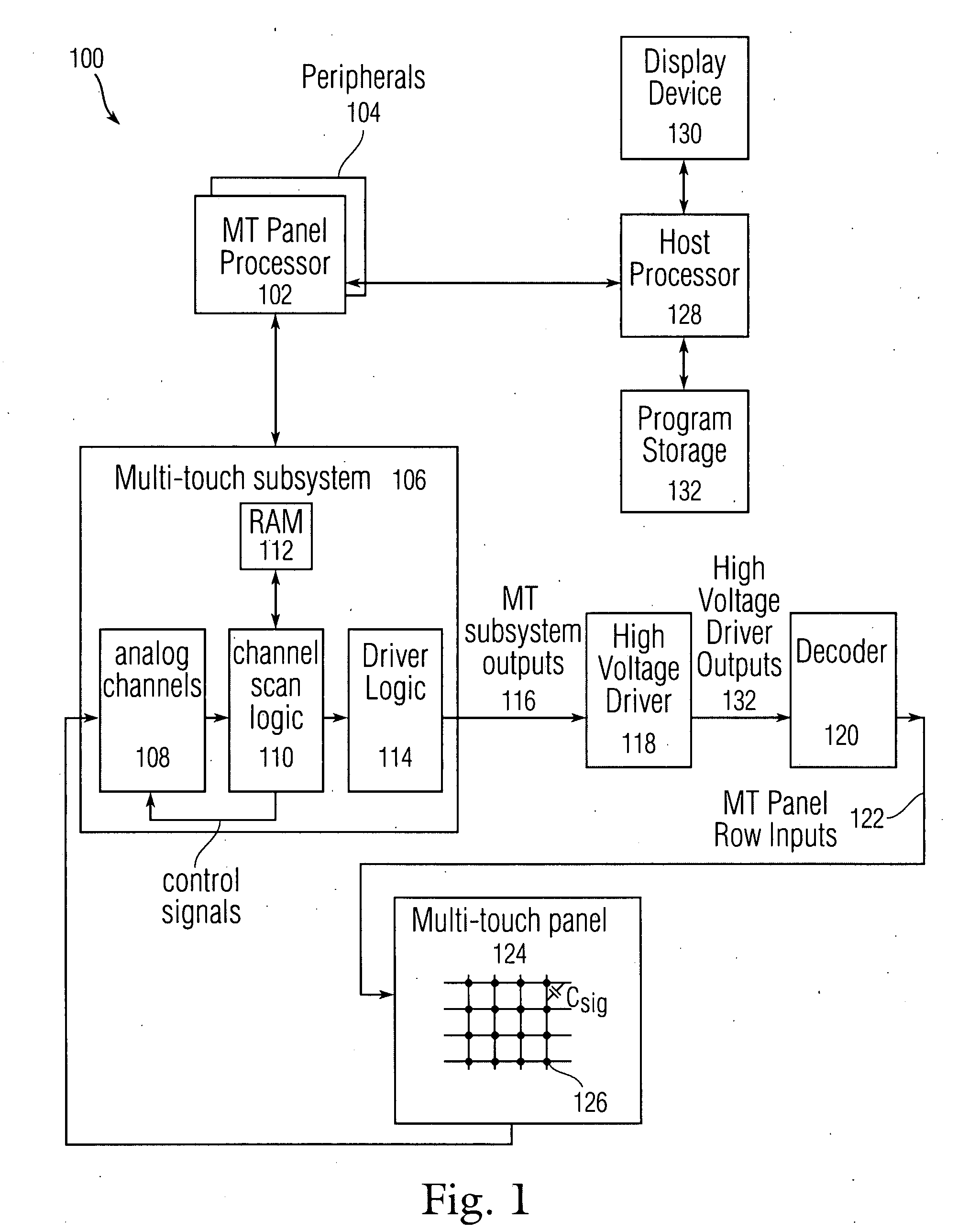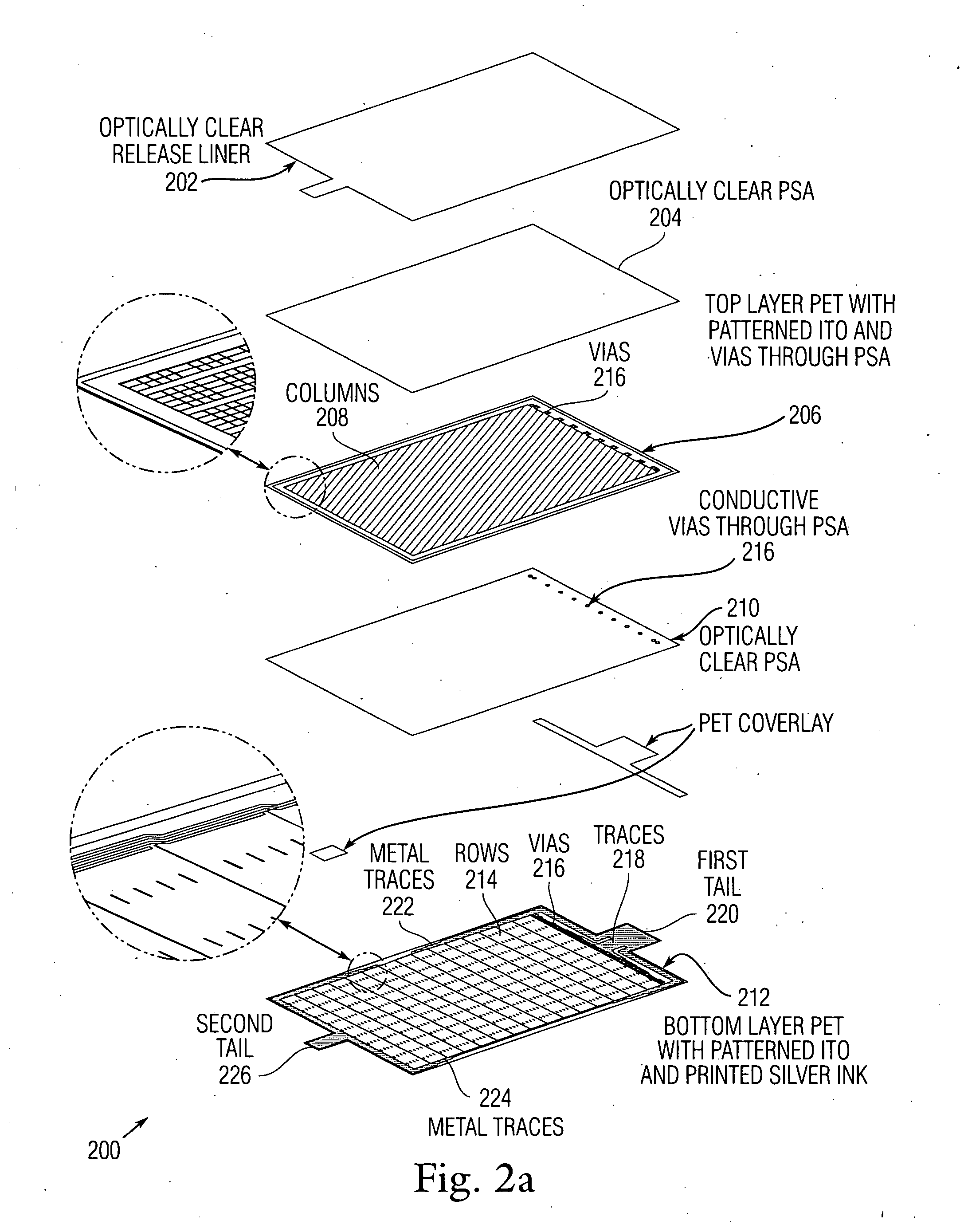Pet-based touch pad
a technology of touch pad and pet, which is applied in the direction of dielectric characteristics, instruments, wireless commuication services, etc., can solve the problem of widened sensor panels, and achieve the effect of more flexibility in product design
- Summary
- Abstract
- Description
- Claims
- Application Information
AI Technical Summary
Benefits of technology
Problems solved by technology
Method used
Image
Examples
Embodiment Construction
[0019]In the following description of preferred embodiments, reference is made to the accompanying drawings which form a part hereof, and in which it is shown by way of illustration specific embodiments in which the invention may be practiced. It is to be understood that other embodiments may be utilized and structural changes may be made without departing from the scope of the preferred embodiments of the present invention.
[0020]A substantially transparent sensor panel can be formed using plastic substrates to take advantage of the cost-effectiveness and manufacturing ease of plastic. Although some capacitive sensor panels can employ rows and columns formed on opposite sides of the same substrate, this approach can be difficult when using plastic substrates. Therefore, in embodiments of the invention, rows and columns can be formed on separate first and second substrates formed from a plastic such as PET.
[0021]In particular, a space-efficient substantially transparent mutual capaci...
PUM
| Property | Measurement | Unit |
|---|---|---|
| transparent | aaaaa | aaaaa |
| transparent conductive | aaaaa | aaaaa |
| mutual capacitance | aaaaa | aaaaa |
Abstract
Description
Claims
Application Information
 Login to View More
Login to View More - R&D
- Intellectual Property
- Life Sciences
- Materials
- Tech Scout
- Unparalleled Data Quality
- Higher Quality Content
- 60% Fewer Hallucinations
Browse by: Latest US Patents, China's latest patents, Technical Efficacy Thesaurus, Application Domain, Technology Topic, Popular Technical Reports.
© 2025 PatSnap. All rights reserved.Legal|Privacy policy|Modern Slavery Act Transparency Statement|Sitemap|About US| Contact US: help@patsnap.com



